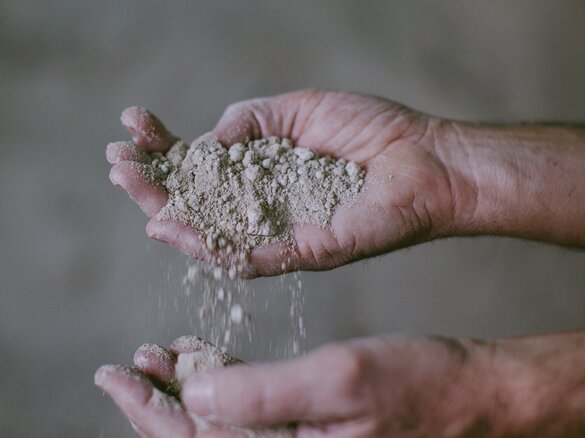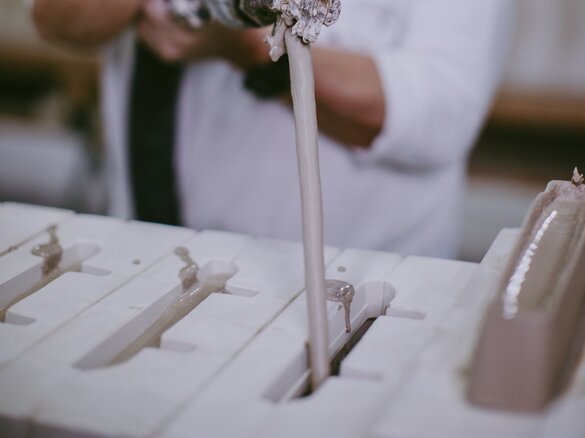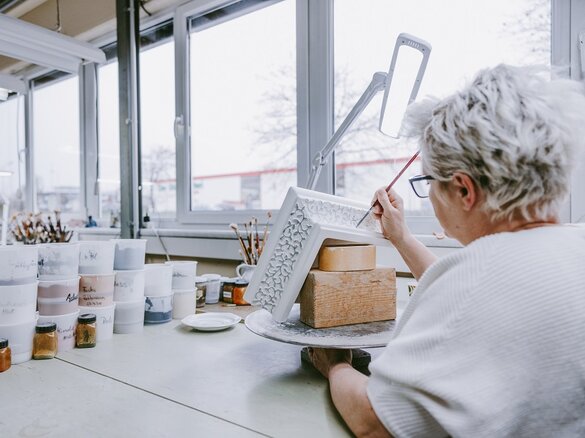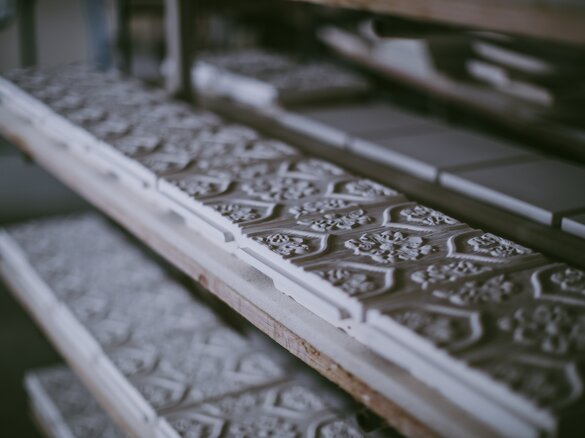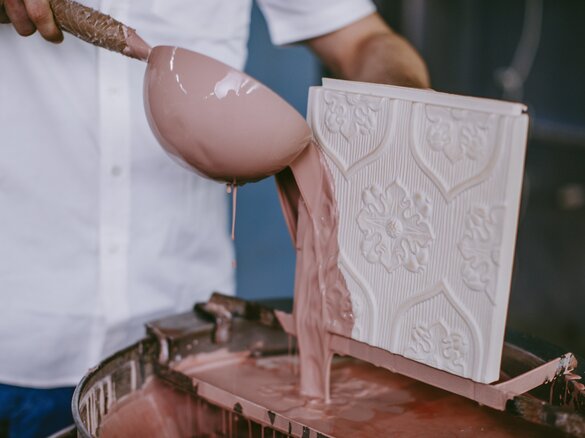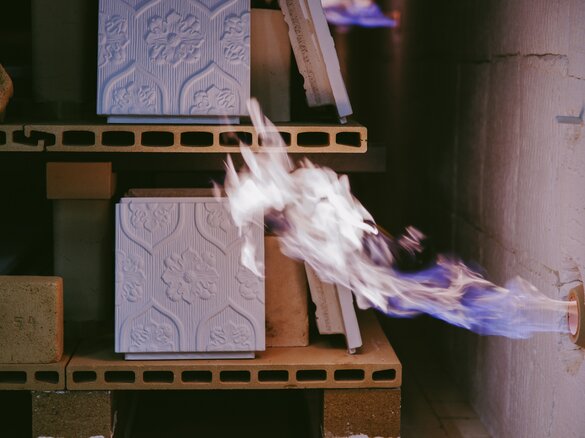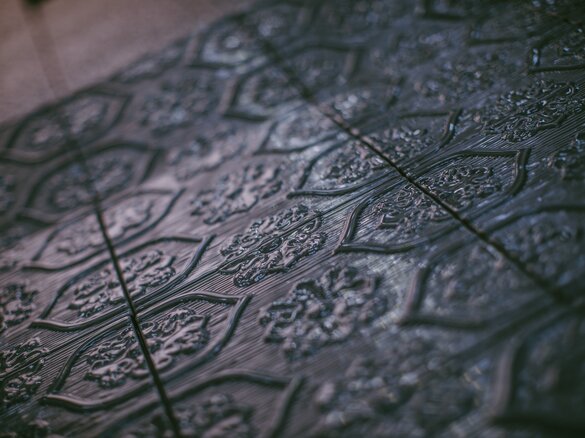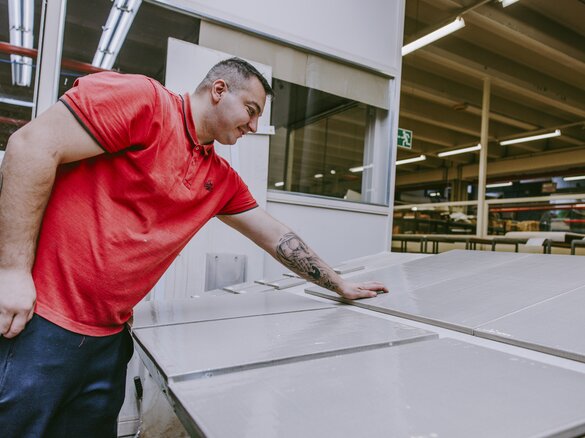

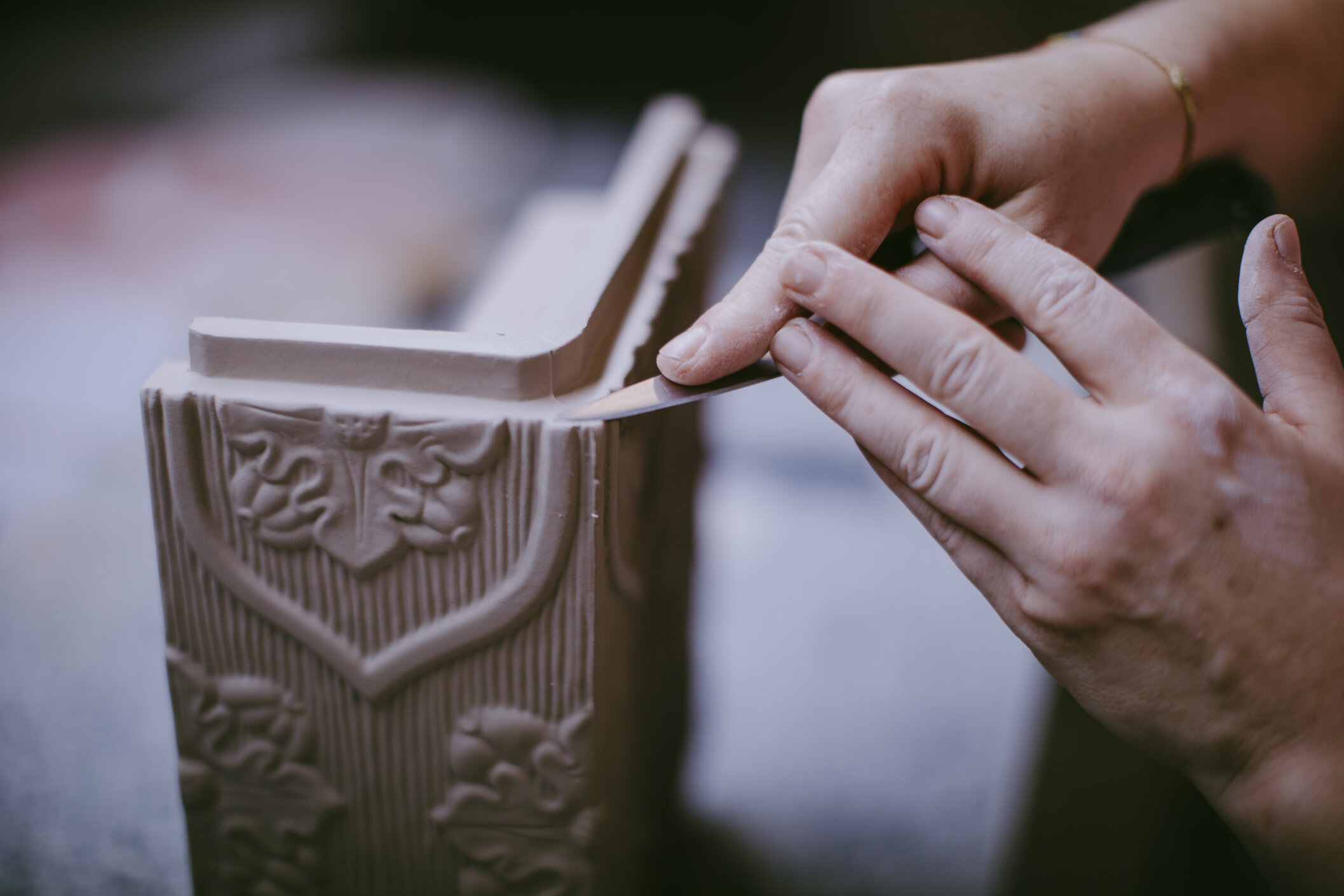
Since 1491 and with great care and technical expertise, ceramic tiles for tiled stoves have been manufactured in Steyr, Upper Austria. The knowledge and expertise have been preserved, passed down and refined over generations. Today, we produce heat storing ceramics for tiled stoves, design radiators, and spa & wellness. Quality and high standards guide every step of our work.
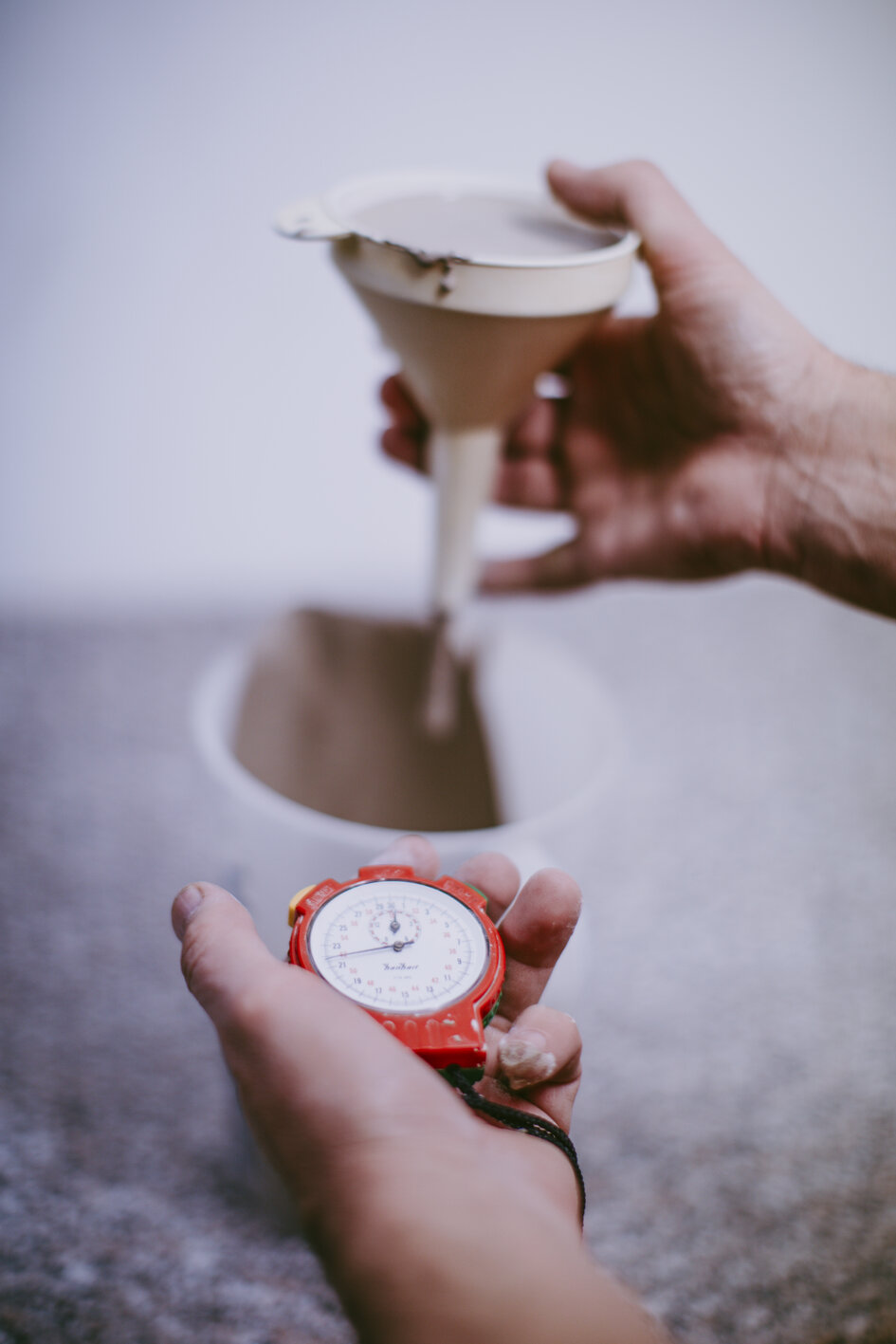
Raw material - clay and mass
A high-quality product begins with the environmentally conscious selection of materials. Each of our tiles is handcrafted by master artisans using the natural elements of earth, water, fire, and air. Their base material is clay, combined with kaolin, quartz sand and minerals, mixed with water. The preparation of the clay is based on a special recipe that has been refined over decades.
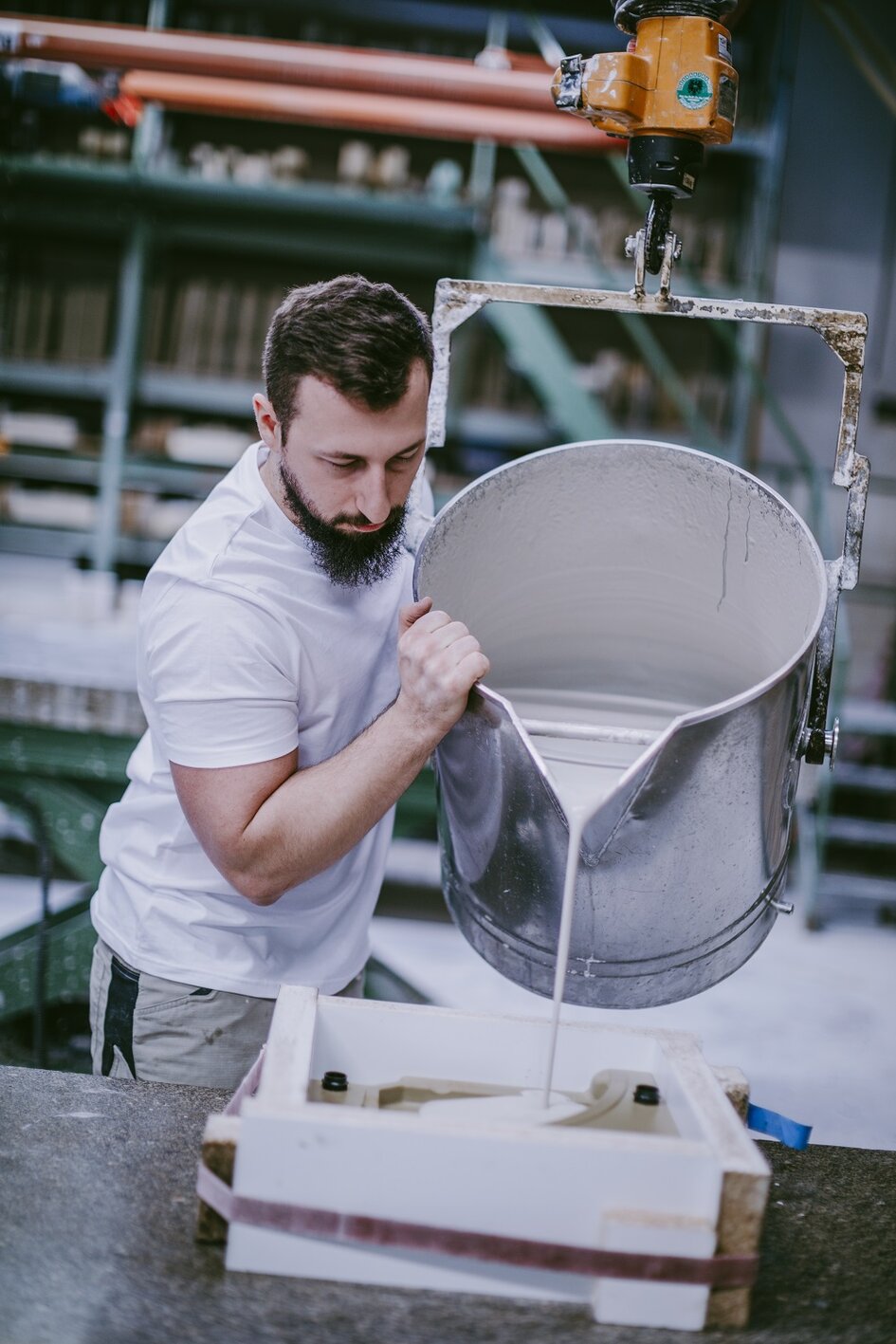
Model and mold making
In model making, the original prototypes of all tiles are developed and created for the first time. IT-based concept planning and technical design go hand in hand with traditional craftsmanship and modeling. In mold making, the typically two-part plaster molds for tile production are manufactured. Liquid plaster is poured around the original tile model. Once the plaster has hardened, the mold is filled with liquid clay.
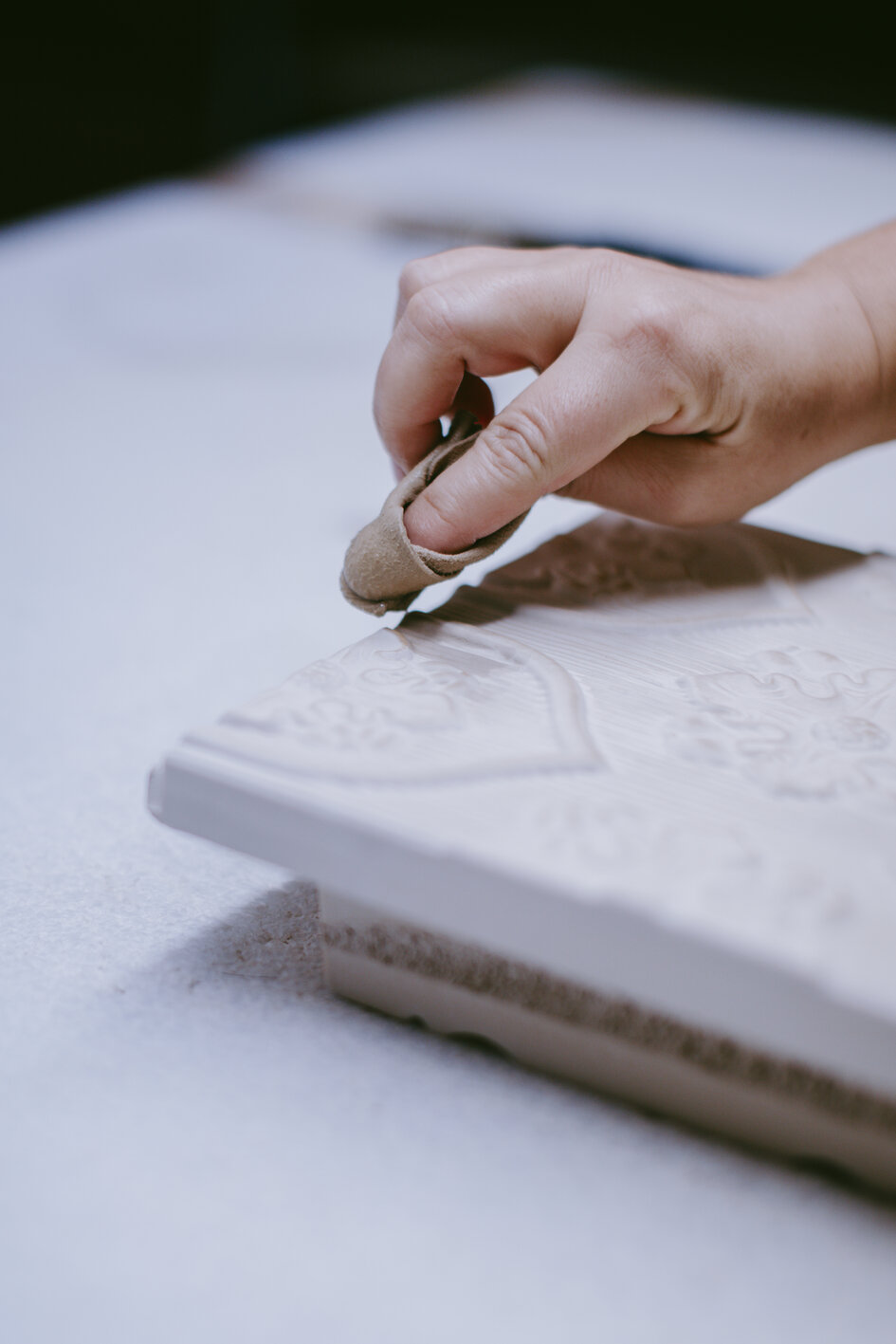
Foundry
After being removed from the plaster mold, each tile—whether in traditional formats or as large-format ceramics—is finished by hand. Casting seams are cleaned, surfaces are smoothed, and reliefs are refined with care.
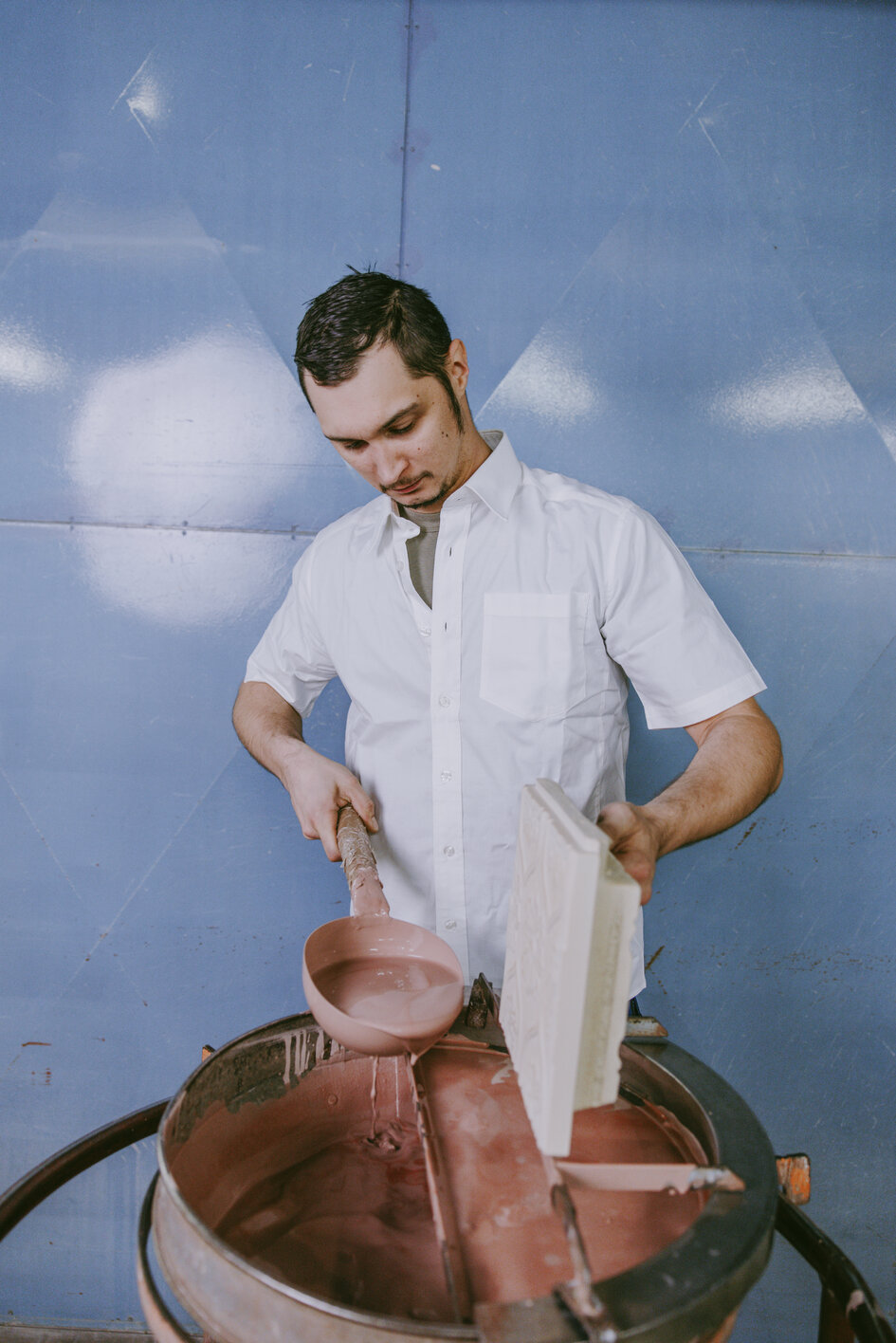
The applying of the glaze
After shaping, the tile is refined with one of over 60 different glazes. These glazes are developed and produced in our in-house laboratory. Using a spraying technique, the glazes are applied by skilled hands. In the traditional "glaze pouring" process, the liquid glaze is applied with a rhythmic pouring motion. After firing, these traditional glazes reveal a glossy, flowing appearance.
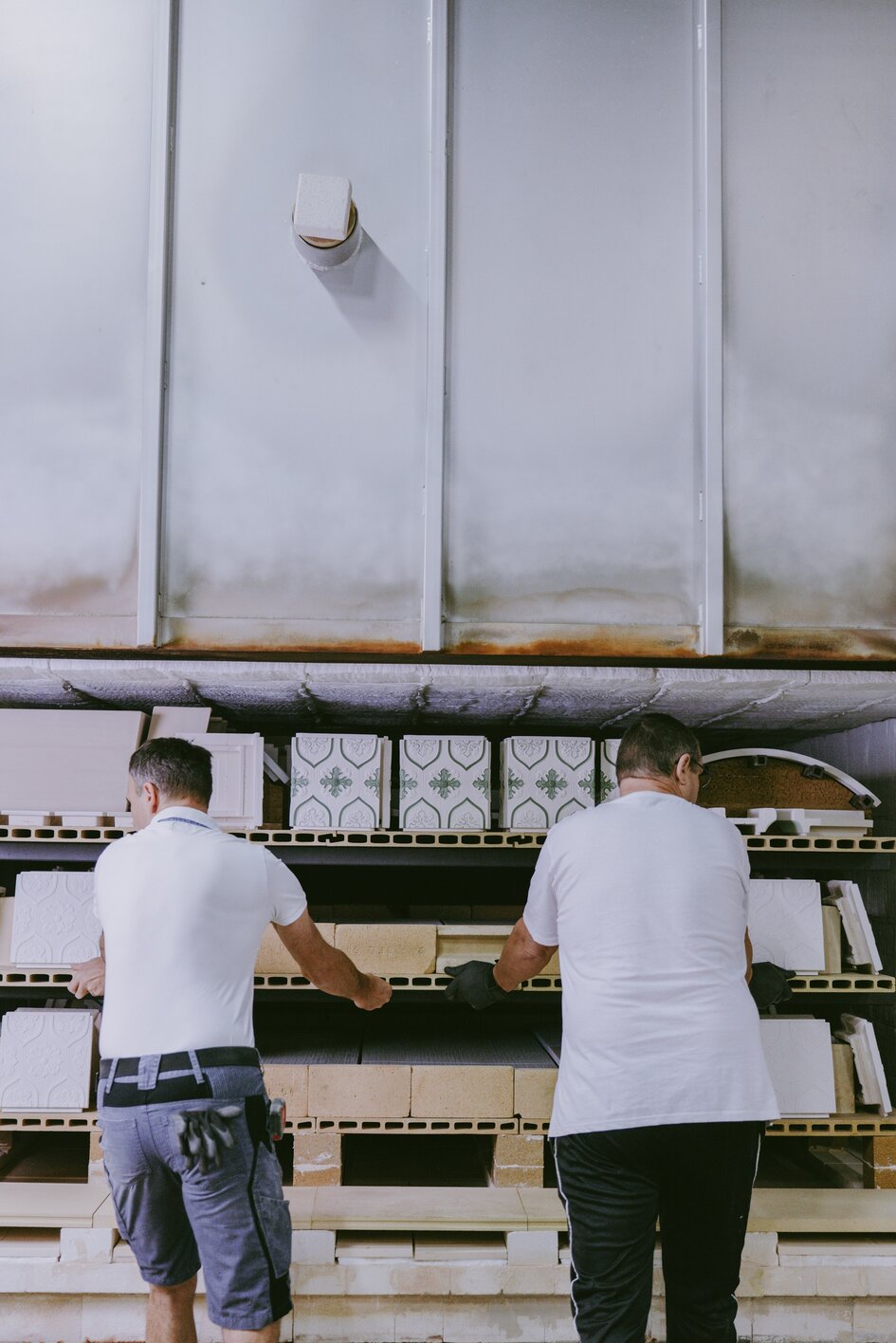
Firing kiln
After the manual assembly of the firing cart, the tiles are fired in the kiln for 26 hours at over 1,000 degrees Celsius. Following a rapid heating phase, a carefully calculated, slow cooling phase over several hours is crucial.
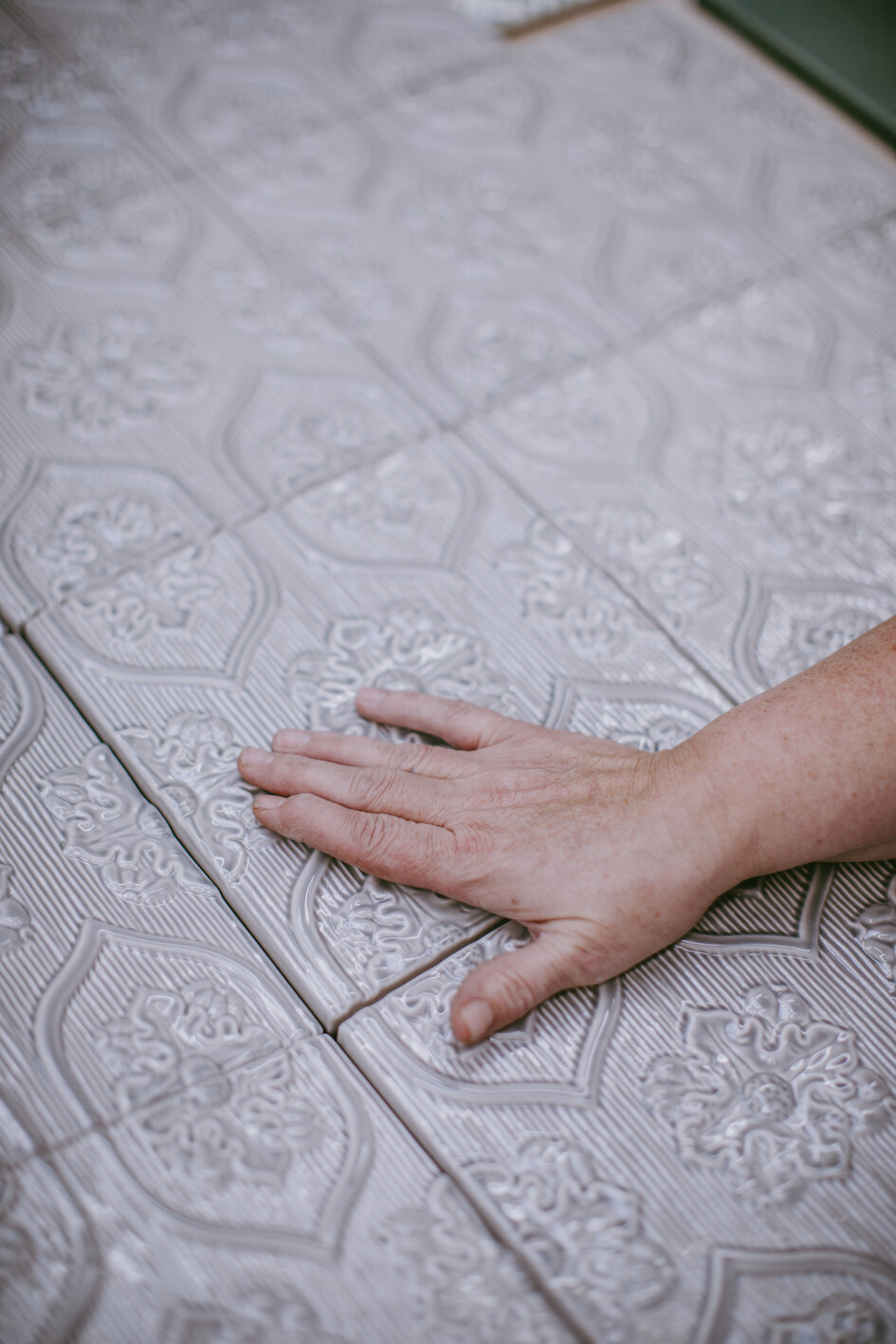
Quality control
In quality control, each order is checked for compliance with technical parameters and high visual quality standards. The tiles are carefully grouped and packaged, taking into account the subtle interplay of glazes.
